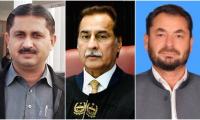It seems that the government of Pakistan is sceptical about talks of an open market regime in the power sector. In the meanwhile, it is letting market players play. The government and other stakeholders may be sceptical due to what has happened in the sugar, oil, flour and other markets.
The government’s ambivalence is shown by its permission to DISCOs to go to courts against Nepra’s decision on wheeling charges. Wheeling is the first step towards an open market regime. Admittedly, Nepra, in its enthusiasm, decided on unreasonably low wheeling charges of Rs1.5 which was a recipe of destroying the already troubled DISCOs. This also created the prospects of bringing the most inefficient plants into the market due to unduly low wheeling rates – Rs1.5 vs Rs5-6 per kWh, the normal rate of DISCOs.
Nepra ignored the legitimate inclusion of cross subsidies and stranded asset charges. The NEP has taken notice of this and has come out with a reasonable framework. The question is: will Nepra accept it? After a bad experience, it may accept unless it wants to block the whole initiative of an open market under the title of the CTBCM.
The NEP has almost ignored the issue of electricity storage. It should have included a significant number of clauses on the issue. Renewable energy share of 60-70 percent is being talked about. Most countries with solar and wind power ambitions and targets are considering setting up electricity storage facilities. For example, the Philippines with only 26000 MW installed capacity is planning to install one GW of storage and is already implementing a phased programme in this respect.
Solar and wind remain quite competitive until these do not cross a certain threshold. After this threshold, the stability and capacity requirements call for addition of storage which almost doubles the current tariff of 3-4 USc of solar and wind, bringing it at par with that of fossils like coal. Perhaps even then, solar and wind should be a preferable option as there is stiff opposition to coal worldwide.
There are signs that even Thar coal may not be allowed to go beyond the projects in the pipeline. Chinese announcements in international forums about not financing coal projects abroad are an example. In this context, renewable energy along with storage acquires extraordinary importance. The NEP should therefore fill this gas and come out with more than what it has provided in its report.
NEP planners may have overstepped their domain. They are talking about the integrated energy plan (IEP). Energy is not just electricity. There are other sectors such as transport, industry and agriculture which use various types of energy and not just electricity which does require gas and oil and perhaps that is the driver to push them into the integrated energy plan.
A multidisciplinary body like the Planning Commission (PC) can handle this assignment of the IEP. The PC has not been successful in delivering in this respect which has driven them into the proposal of the IEP. There is no guarantee that the Power Planning and Monitoring Company (PPMC) would succeed despite institutional lack of context. It has proposed to move the IEP cell to the PPMC – although it doesn’t seem that this will be allowed.
The power division or the PPMC has much to integrate within the domain of the power sector – generation, transmission and distribution. The transmission issue has often been missed as we notice the lack of matching transmission capacity. Distribution has always remained a lone separate activity.
Universal access and rural electrification have been on the agenda for a long time. It was difficult and uneconomical to spread the grid far and wide to include less populated rural areas. Fortunately, solar, wind and small hydro and other renewables have opened up many possibilities. The NEP has touched on this subject. Presently, in many rural areas, people are using these resources under cooperative self-help in an unorganised way.
Electrical cooperatives are quite successful in the US. Under cooperative schemes, at least operations and maintenance and bill collection can be organised even if provincial governments or utilities do the initial installations. Bills can be collected by the locals under a legal cooperative framework with part of it deposited into the investor’s account. The lack of framework has prevented access of rural areas to many facilities. The government may also consider spreading the cooperative movement in other sectors as well.
A laudable aspect of the NEP is the provision for indigenisation of fuel. It has provided for the conversion of imported coal power plants to the local Thar coal. It may be a difficult yet totally possible task. Feasibility studies should be undertaken in this respect. Three plants on imported coal was initially a mistake; one or two would have been enough to meet the deficit in the light of installing gas plants.
There is dangerous talkson the closure of these plants under a compensation scheme. In this background, the conversion to Thar coal is a good idea. We are facing a massive current account deficit problem. Increasing exports is a long-term issue. Immediate options are available in reducing energy imports through indigenisation. Thar coal development has almost been entrusted to one company. More players should come into coal mining. Pakistan has hardly any other energy resource, and its gas supply is already dwindling.
It should be emphasised on international forums that Pakistan has a low carbon front and does not have many choices. India has managed to delay coal elimination targets to beyond the year 2050.What harm would a capacity of say 25,000 MW on Thar coal do in the background of more than 200,000 MW coal power plant capacities in our neighbourhood?
Talk of hydrogen is premature for a plan whose timeline is the year 2024. Besides, it is a petroleum division issue, if at all. I am a huge supporter of hydrogen as a long-term option. At this stage, research and development may be initiated in this respect. One wishes the NEP would have provided for the local manufacturing of solar equipment as well.
The NEP is a welcome initiative. It will integrate the much-needed activities which keep dangling as mere suggestions, provide a useful document to stakeholders, and generate a common purpose around which efforts can be organised. It is hoped that it does not stay as a wrapped document.
The plan can be improved and adjusted; the issues raised in the article can be looked into as well. The elimination of circular debt, inefficiencies and leakages and undertaking modernisation and innovation, and expansion to supply the required demand leading into higher consumer utility and satisfaction and reducing cost of supplies are the call of the hour. It can be done. The NEP can be a great tool in achieving these worthy objectives. It should be circulated widely to get the input of stakeholders.
Concluded
The writer is a former member of the Energy Planning
Commission and author of ‘Pakistan’s Energy Issues:
Success and Challenges’.
He can be reached at: akhtarali1949@gmail.com
A woman walks past a building of the International Monetary Fund. — AFP/FileThe annual and spring meetings of the...
Late Benazir Bhutto's daughter Asifa Bhutto Zardari addresses the Christian community in Bihar Colony on January 23,...
Representational image. — PexelsWater is an important scarce natural resource that is required for several everyday...
Pakistani employees of online marketplace company Kaymu at work in Karachi. — AFP/FileThe true spirit of development...
India uses Afghanistan as a backstage area to carry out terrorist attacks against Pakistan
Another report by the Pakistan Institute of Peace Studies states that 78 per cent of attacks have been carried out by...







